Cryptocoryne wendtii
Scientific name: Cryptocoryne wendtii
Family: Araceae
Maximum size reached under cultivation: 5 - 10 cm (1.97 - 3.94 inch)
014
Recommended pH range: 6.8 - 7.2
Recommended water hardness: 4 - 12°dGH (71.43 - 214.29ppm)
0°C 32°F30°C 86°F
Recommended temperature range: 23 - 27 °C (73.4 - 80.6°F)
Preferred propagation method: Runners
Native to: Sri Lanka
Growth rate: Normal
Recommended substrate: Rocky
Lighting requirements: Medium
Ideal placement in tank: Midground
Family
Araceae
Origin
Cryptocoryne wendtii originates from the freshwater rivers and streams of Sri Lanka, where it grows in shaded areas under the forest canopy. In its natural habitat, this plant thrives in slow-moving or stagnant waters, often rooting itself in nutrient-rich substrates. Due to its adaptability, populations of Cryptocoryne wendtii have been successfully introduced to other regions, including parts of Florida. It has since become a popular choice among aquarists for its hardiness and versatility in a variety of tank setups.
Lighting Requirements
Cryptocoryne wendtii is a versatile plant that can tolerate a range of lighting conditions, from low to moderate light. While it can survive in low-light environments, its growth habit will differ based on the intensity of the light. Under low light, the plant tends to grow taller with elongated leaves, creating a more "leggy" appearance. In moderate lighting, it forms a more compact and bushy growth, showcasing its vibrant leaf coloration. However, avoid exposing it to intense light as it may lead to algae growth on the leaves. Ideally, the plant thrives under filtered or subdued lighting, replicating its natural shaded habitat.
Propagation
Cryptocoryne wendtii is known for its straightforward propagation method, which involves sending out runners from the base of the mother plant. These runners will develop into miniature plantlets that grow roots and leaves over time. Once the plantlets have established a few leaves and a decent root system, they can be separated from the mother plant and replanted elsewhere in the aquarium. This process allows aquarists to create dense plantings over time, enhancing the tank's visual appeal and providing natural hiding spots for fish and invertebrates.
Difficulty
Cryptocoryne wendtii is classified as an easy-to-care-for plant, making it an excellent choice for both beginners and experienced aquarists. It can tolerate a wide range of water parameters and does not require CO2 supplementation to thrive. Its adaptability to different lighting and substrate conditions further contributes to its reputation as a low-maintenance aquatic plant.
Short Description
Cryptocoryne wendtii is one of the most adaptable and easy-to-grow species in the Cryptocoryne genus. Its growth rate varies depending on the lighting conditions in the aquarium. Under low light, it will grow taller with elongated leaves, creating a lush, natural look in the aquarium. When provided with moderate lighting, it forms a neat, compact bush with robust leaves. This plant is a heavy root feeder, drawing nutrients from the substrate rather than the water column. Therefore, it thrives best in a nutrient-rich substrate, such as gravel mixed with root tabs or aquatic soil. While it generally doesn't require additional fertilization, providing nutrient-rich substrates and occasional root tab supplements can encourage lush growth.
One notable feature of Cryptocoryne wendtii is its resilience to fluctuating water parameters. It can tolerate varying pH levels and hardness, making it suitable for a wide range of aquarium setups. However, it's worth noting that this plant can be susceptible to "Crypt melt" – a condition where its leaves suddenly disintegrate due to changes in water conditions. If this occurs, don't be alarmed; the plant will typically bounce back with new growth once it acclimates to its new environment. Its ability to thrive with minimal care makes it a popular choice for aquascaping, providing a natural aesthetic while also contributing to the overall health of the aquarium ecosystem.

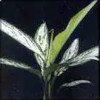 Aglaonema commutatum “Silver Queen”
Aglaonema commutatum “Silver Queen”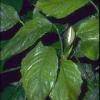 Aglaonema simplex
Aglaonema simplex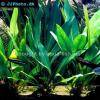 Anubias afzelii
Anubias afzelii Anubias barteri
Anubias barteri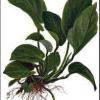 Anubias barteri “Caladiifolia” ‘1705’
Anubias barteri “Caladiifolia” ‘1705’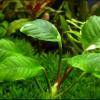 Anubias barteri “Coffeefolia”
Anubias barteri “Coffeefolia”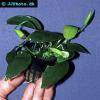 Anubias barteri “Nana”
Anubias barteri “Nana”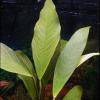 Anubias barteri v. angustifolia
Anubias barteri v. angustifolia Anubias gracilis
Anubias gracilis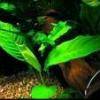 Anubias heterophylla
Anubias heterophylla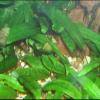 Cryptocoryne affinis
Cryptocoryne affinis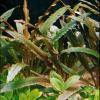 Cryptocoryne albida
Cryptocoryne albida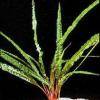 Cryptocoryne balansae
Cryptocoryne balansae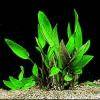 Cryptocoryne becketti
Cryptocoryne becketti Cryptocoryne blassi
Cryptocoryne blassi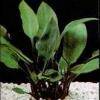 Cryptocoryne ciliata
Cryptocoryne ciliata Cryptocoryne cordata
Cryptocoryne cordata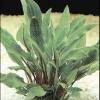 Cryptocoryne lutea
Cryptocoryne lutea Cryptocoryne nevillii
Cryptocoryne nevillii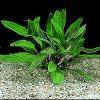 Cryptocoryne petchii
Cryptocoryne petchii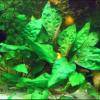 Cryptocoryne pontederiifolia
Cryptocoryne pontederiifolia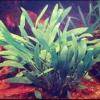 Cryptocoryne willisii
Cryptocoryne willisii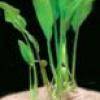 Lagenandra ovata
Lagenandra ovata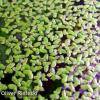 Lemna minor
Lemna minor Pistia stratiotes
Pistia stratiotes Spathiphyllum petite
Spathiphyllum petite Spathiphyllum wallisii
Spathiphyllum wallisii